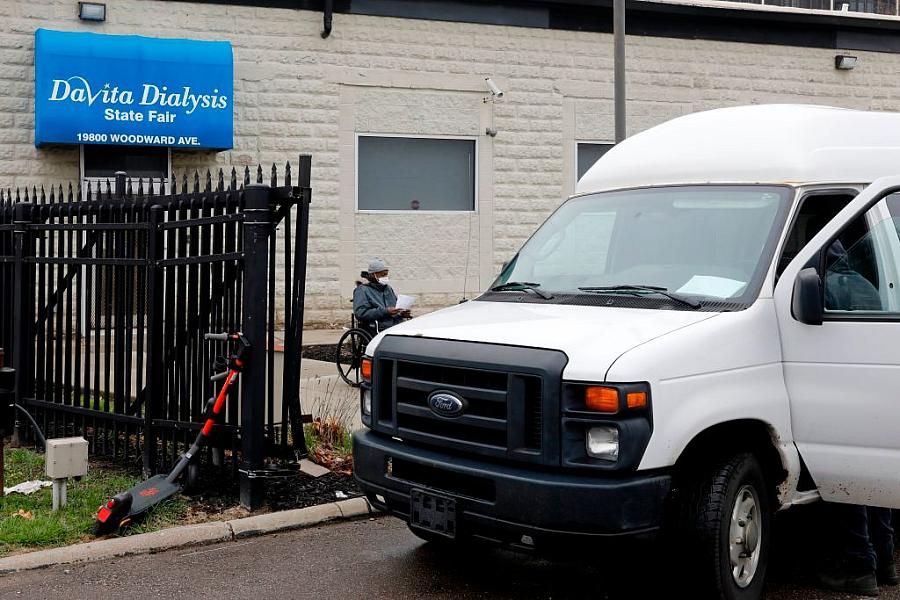What happens when dialysis patients are denied treatment after being ‘involuntarily discharged’?

(Photo by Jeff Kowalsky/AFP via Getty Images)
In November 1962, Life magazine devoted a cover story to the new so-called “God Committee” that determined which patients with kidney failure could access the few machines that could filter toxins and other waste from their blood. “They Decide Who Lives, Who Dies,” the headline read. Without dialysis, those with kidney failure could die, often within days or weeks. While much in medicine and the dialysis industry has changed in the subsequent half century, access to dialysis for someone whose kidneys have stopped working remains a matter of life and death.
In a country that has more freestanding dialysis clinics than Wendy’s restaurants, access to dialysis seems like a given. Yet a small but significant number of Americans would disagree. Thomas Alba attended his thrice-weekly dialysis sessions for more than a decade before receiving what physicians term an involuntary discharge. Alba just called it being kicked out of dialysis.
His dialysis clinic said he was a safety risk after a care technician spotted a (registered and permitted) handgun in his car. But Alba and his family say that it was his persistent complaints over the clinic’s adherence to national safety standards that triggered the move. Blackballed from all local dialysis clinics, Alba was relegated to receiving emergency dialysis at local hospitals. Even when done properly, dialysis is hard on the heart. Emergency dialysis is even harder. After having a heart attack in early December 2021, Alba was unable to check into cardiac rehab because he didn't have a dialysis provider. He had a second heart attack in January 2022 and died aged 57.
Alba isn’t the only one. Message boards for individuals on dialysis are riddled with such complaints and reports of similar incidents. While some dialysis patients can find care at other clinics or via home-based dialysis, others are left without options. For them, the situation is as grim as it was back in 1962, with no access to the proven technology that would save their lives. Many dialysis patients like Alba are afraid to raise concerns about the quality of their care because they fear they will be next on the list of involuntary discharge.
Dialysis providers, for their part, question whether involuntary discharge rates are increasing, and attribute any potential rise to the increasingly complex medical and psychiatric issues nephrologists must manage. But global statistics show that while this is occurring around the world, the United States is the only country where involuntary discharge occurs on a regular basis. It’s also the only country where dialysis care is primarily in the hands of private industry. Current guidelines stipulate that dialysis centers need to find alternative arrangements for involuntarily discharged patients, but Alba is evidence that this doesn’t always happen.
Instead, what should be a measure of last resort is now potentially being used by dialysis clinics to rid themselves of their difficult, time-consuming patients — and pad their own bottom lines.
I first began investigating the dialysis industry in 2020, as part of an award-winning series on the business of dialysis for Undark magazine. Despite thousands of hours of reporting and hundreds of interviews, the topic of involuntary discharge never came up. It’s largely viewed as a rare phenomenon. But as I began reporting on the subject, people on dialysis told me that fears of being unable to access care looms large in their everyday life.
Aiding my investigation are the vast amounts of data and statistics collected by the End Stage Renal Disease (ESRD) Quality Networks. Medicare, which provides health insurance to any U.S. citizen whose kidneys have failed, collects reams of data on dialysis clinics and their patients, information that is processed by a nationwide network of 18 ESRD areas. Despite the large volume of research conducted on this data, virtually no quantitative analyses have been performed on involuntary discharge in the last decade. The data that is published is vague and can’t provide a granular picture of who is most at risk for involuntary discharge, and what might be done differently.
For the 2022 Center for Health Journalism National Fellowship, I intend to obtain this data and analyze it to better understand whether involuntary discharge is on the rise, and to tease apart the factors that increase the chances that someone will be kicked out of dialysis. I want to know how often the proper procedures are followed, and to see what happens to these patients over time. I am also talking to patients to understand how threats of involuntary discharge might be used against individuals, and what both patients and providers want to know about decreasing conflict and working collaboratively. What do both groups want and need that they’re not getting?
I also intend to investigate novel “second chance” programs that are working with dialysis patients who have been involuntarily discharged to keep them coming into clinics for regular treatment, and how lessons learned from these programs can be incorporated into standard care.
